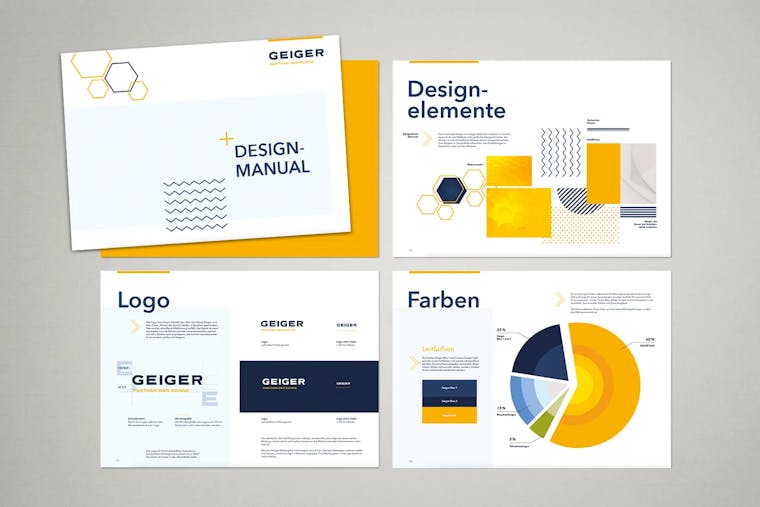Branding agency: Shaping markets with brands

Since there are already more than 800,000 registered trademarks in Germany, differentiation is essential. Mastering this challenge is the mission of our branding agency.
On the journey from a simple logo to one of the world’s most valuable brands, effective and powerful branding plays a crucial role. The most famous example of successful branding: the logo with the bitten apple, which today everyone associates with the world’s leading technology company and its innovative products.
Your Contact to branding agency



Branding is measurable
As a branding agency, we work on the long-term values of a company. The effects of branding appear more gradually than those of lead generation campaigns. Nevertheless, a successful corporate design project also delivers measurable results. As an agency that brings together all competencies and experts under one roof, our data analysts can evaluate the exact impact of branding – from its effect on out-of-home billboards to the website and social media marketing.
Let our expertise and experience as a branding agency convince you.
Branding for companies in the B2B sector
Brand development is an investment that only pays off in the long term. In the B2B sector, it is therefore sometimes neglected.
However, branding creates strategically grounded added value for companies. Those who invest in brand development sustainably can benefit from significant advantages over time – from increasing market share to revenue growth.
An investment in branding in the B2B sector is an investment in the future of the company that pays off.
Branding agency: Sustainable advantages for companies
Good branding requires patience: for a brand to establish itself, it usually takes years and consistent presence with creative campaigns. Communicating corporate values creates a distinctive brand image. A clear strategic alignment of the corporate identity and a convincing visual representation of the brand design are essential for this.
When a company succeeds in conveying a true brand feeling, it results in long-term customer loyalty and a high likelihood of recommendations. Branding must always be approached with a long-term perspective while still being continuously adapted to changing markets.
To achieve this, you need an experienced branding agency with a team of creative designers and strategists who have a deep understanding of brand definition, logo development, design, and visual identity, and who tackle the branding project with comprehensive expertise. At Ruess Group, we bring the necessary know-how and long-standing experience to the table.
Five key advantages of branding for companies in the B2B sector
1. Long-term benefits
By carefully building a brand, a company invests in its future and secures sustainable revenue. For publicly traded companies, projected sales up to ten years in the future significantly influence stock value.
2. Short-term sales
Once a brand is established, branding also drives short-term sales. The principle here: customers tend to buy brands they already know.
3. Pricing power
Successful branding influences a company’s pricing strategy. Renowned B2B companies can establish higher prices because customer price sensitivity decreases.
4. Talent acquisition
Recruitment campaigns work better when they include a brand message. Just as buyers develop a preference for certain brands, applicants also aspire to work for reputable brands.
5. Adaptability
Market demand for specific products changes constantly. But a strong, established brand is flexible enough to succeed in other industries with different products while maintaining its relevance.
As a branding agency: With these steps we establish our clients’ brands
Target group identification
As a branding agency, we provide a clear branding process for brand development, starting with a precise definition of the target audience. Different target groups must be addressed with different approaches. By identifying the needs of your company’s target group, we can create a brand that resonates.
Competitive analysis
Just as important as identifying target groups is analyzing competitors in the market: What are they doing in terms of advertising, communication strategy, pricing, and more? This gives us a clear foundation for how your company is positioned in the market. Based on this, we can develop a strategy that ensures your company stands out from the competition.
Brand objectives and positioning
As a branding agency, we develop a mission statement for your company that forms the basis for all branding activities and aligns with your corporate values. The key questions are: Why does your company exist? What problems do your products or services solve? Why should customers choose you instead of your competitors?
Defining the brand’s personality and tone of voice
One of the essential features of your brand is its personality. This is reflected in its language – whether on websites, social media, emails, or product pages, the same consistent tone of voice must come across. Regardless of where customers interact with your brand, they should encounter the same personality. It’s worth capturing this tone in an editorial style guide.
Creating the brand story
In marketing, compelling storytelling works best to attract people. As a branding agency, we develop a brand story for your company that complements your mission statement and clearly demonstrates how your products and services can solve the problems of a fictional customer.
Choosing the brand name
Deciding on a brand name is one of the most important steps in branding. Brevity and distinctiveness are crucial. We support our clients in the naming process, knowing how far-reaching and long-term this decision is. Research is also important to avoid too much similarity with existing brands, especially within the same industry.
Developing the slogan
A catchy slogan is extremely valuable for a brand – but it must align coherently with the overall branding. We take the time to work with you to create the right slogan for your brand.
Design, look, and logo of the brand
The logo is the face of your brand: it represents the first impression for customers. Colors, fonts, and visuals convey the personality of the brand. The creative minds in our agency design a visual identity for your brand that speaks for itself.
Company-wide brand integration
Establishing the brand core marks the critical process of integrating the brand throughout the entire company. As a branding agency, we ensure brand presence across all communication channels: on social media, in every marketing campaign, and extending to web design – your brand’s tone and identity will be consistently recognizable.
As a branding agency, we create brand equity
By making your company’s brand known, you build brand equity. This strengthens customer relationships and enables higher pricing: customers prefer to buy from brands they are familiar with – and remain loyal to them. Acquiring new customers is significantly more challenging and costly than retaining existing ones. For companies with high brand equity, marketing costs per product sold decrease accordingly.
As a branding agency, we develop a brand strategy for your company and support you in creating a brand identity. Our versatile team manages the creative process to design a unique logo and a fitting slogan for your brand. We translate your brand’s tone of voice into content across all communication channels. Our goal is to build a strong, distinctive brand that resonates with your target audience, enhances brand awareness, and strengthens customer loyalty. Or with other words: Shaping markets with brands.
Your contact at the branding agency






